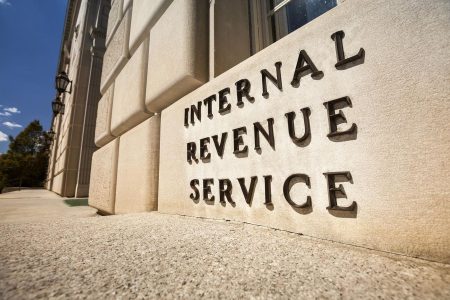The IRS has issued more guidance on the required minimum distribution (RMD) rules—this time in the form of final regulations.
The final regulations offer some clarity on the withdrawal and eligibility requirements for inherited IRAs.
RMDs
By law, you are required to withdraw funds from your retirement account each year after you reach age 73 (climbing to 75 in 2033). That amount is referred to as a required minimum distribution, or RMD. Typically, the amount you’re required to withdraw is figured each year by dividing your previous end-of-year account balance by your life expectancy. You’ll find your life expectancy factor in IRS Publication 590-B.
Inherited IRAs
If you inherit a retirement account, however, the rules are a bit different—made even more so thanks to the SECURE Act.
Before the SECURE Act, if you inherited a retirement account, you could minimize the tax consequences by taking distributions over your own life expectancy. Under the new rules, if you inherit a retirement account, you can withdraw all the money as a lump sum or over ten years—which earned it the cleverly-named 10-year RMD Rule.
The rules can be tricky, but generally, the 10-year RMD rule requires that all assets in the inherited IRA must be fully withdrawn by the end of the 10th year following the original IRA owner’s death (in the case of a minor child beneficiary, once they reach the age of majority, the 10-year RMD rule kicks in). That sounds easy—but it created some confusion. Some beneficiaries interpreted the language to mean they could wait until the end of the 10-year window to make a complete withdrawal—meaning that they didn’t have to make regular withdrawals every year for 10 years. After all, that was consistent with the old five-year rule for certain inherited IRAs.
The IRS, however, had previously signaled that RMDs must be taken each year if the original participant had already begun taking RMD. That was problematic for beneficiaries who inherited an IRA after the SECURE Act and did not take any required distributions.
Skipping an RMD is an expensive mistake—the penalty is up to 25% of the amount by which the RMD for a year exceeds the amount distributed in that year.
History
In 2022, the IRS announced in Notice 2022-53 that, under the proposed regulations, beneficiaries subject to the 10-year RMD Rule must continue to take annual distributions after the IRA owner’s death, with a total distribution made no later than the 10th year after the year of death.
In that 2022 notice, the IRS also offered transitional relief. Specifically, if a taxpayer did not take a specified RMD in 2021 or 2022 related to an inherited IRA, the IRS agreed not to impose an extra (excise) tax or penalty on that amount in 2022. And, taxpayers who had paid the tax for a missed (related) RMD could request a refund.
The following year, the IRS issued Notice 2023-54, which added relief by excusing missed RMDs related to an inherited IRA in 2023. The notice also announced that the final regulations would apply no earlier than the 2024 distribution calendar year.
More recently, the IRS issued Notice 2024-35, which—you guessed it—extends the relief through 2024 and makes clear that the final regulations will apply no earlier than the 2025 distribution calendar year. The relief applies to an RMD that would have been required if the IRA owner died in 2020, 2021, 2022, or 2023 and on or after the IRA owner’s required beginning date.
Final Regulations
The final regulations confirm the general guidance in the proposed regulations: distributions to a beneficiary must be made “at least as rapidly” as while the beneficiary is living, and a complete distribution must be made within ten years.
You may hear references to the “at least as rapidly” rule a great deal while talking about inherited IRAs. The rule emphasizes the frequency of withdrawal, and not the amount of the withdrawal. Here, it means that if the original IRA owner dies after distributions have begun under the life expectancy rules, the remaining amount must be distributed at least as rapidly as the method being used.
However, if the original IRA owner dies before the RMDs have begun, the interest must be distributed within five years after death or over the life or life expectancy of the designated beneficiary, with the distributions generally beginning not later than one year after the date of death.
Eligible Beneficiaries
The final regulations also clarify the treatment of eligible beneficiaries. Some beneficiaries—called eligible beneficiaries—are exempt from the 10-year RMD Rule. Those include surviving spouses and children under 21 of the IRA owner, disabled and chronically ill persons and a person who isn’t more than 10 years younger than the account holder.
(Note that self-certification of disability or chronic illness is not sufficient under the final regs, which require documentation.)
If the original account holder had not begun taking RMDs, eligible beneficiaries can choose to take them consistent with their life expectancy or elect the 10-year rule. If the original account holder was taking them before death, eligible beneficiaries could elect to take them consistent with the longer of their life expectancy or that of the participant.
Eligible beneficiaries younger than 21 have a hybrid treatment—the 10-year rule does not apply until they turn 21.
Ineligible Beneficiaries
Ineligible beneficiaries—that’s everyone who is not an eligible beneficiary (commonly, the adult children or grandchildren of a plan participant)—are subject to the 10-year rule.
Trust As A Beneficiary
The final regulations also retain the see-through trust concept in the 2002 final regulations. To be a see-through trust, the trust must meet the following criteria:
- The trust is valid under state law or would be valid, but for the fact that there is no corpus.
- The trust is irrevocable or will, by its terms, become irrevocable upon the employee’s death.
- The trust beneficiaries who are beneficiaries of the trust’s interest in the employee’s benefit are identifiable.
- The specified documentation requirements are satisfied.
(As with much of tax—and trust—law, these rules are very specific and exceptions and special treatment may apply depending on the circumstances.)
Effective Date
The final regulations apply to calendar years beginning on or after January 1, 2025. For earlier years, taxpayers must apply the 2002 and 2004 final regulations “taking into account a reasonable, good faith interpretation of the amendments made by sections 114 and 401 of the SECURE Act”—and those IRS notices.
Advice
The rules related to RMDs can be complicated, especially due to changes to the SECURE Act and the SECURE 2.0 Act. Getting it wrong can be expensive. If you have questions, check with your tax or financial professional.
(Quick procedural note: These final regulations are, as of the time of this article, considered unpublished. They are scheduled to be published in the Federal Register on July 19, 2024.)
Read the full article here










